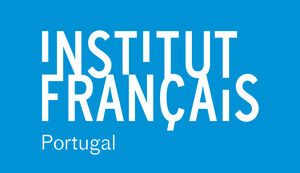Christine Enrègle, born in 1973 in Suresnes (Paris), Doctor in Visual arts since 2008, from Paris 1, Panthéon-Sorbonne University, is professor of Visual arts at the Condé school of design, in Paris. While writing her thesis, she is awarded university scholarships to study in Brazil, at the Fine Arts School of Belo Horizonte (Minas Gerais). First ever artist in residency at the Rio botanical gardens in 2004, she participates in various artistic residencies in France and abroad, in particular in Lisbon where she presents her drawings during a personal exhibition, “From the tropical gardens to the charcoal. Drawing through its metamorphoses”, in the Sociedade Nacional de Belas Artes (SNBA) from July 7th to the 26th, 2020. She participates in individual and group exhibitions in France, Portugal, Brazil, South Korea…
Her residency in Hangar has the support of the Institut français du Portugal.
The work planned for June and July 2020 at Hangar will pursue the one initiated in August 2018 and developed in June and July 2019. What touched me in 2018 in Lisbon are some trees I encountered first in Brazil, sixteen years ago, when I was studying at the School of Fine arts in the city of Belo Horizonte, in the state of Minas Gerais. I stayed there for one year during my PhD. So, I wanted to work on the link between Portugal and Brazil, through these trees. The drawings I did here are in charcoal on canvas: they are one meter and a half in height and eighty centimeters wide. The size is the same as the table I worked on. And it is linked to the size of the body. From the trees of different gardens in the city until these drawings in charcoal, I used pictures I took of those trees. These different stages of the process that include different gestures have brought me to transform trees and to work on the theme of the metamorphosis. Through the drawings, trees became more organic: turning into bodies, animals, hair, muscles, sorts of cut-away diagrams… Presented in a chronological way, as if they were part of a travel journal, they have no beginning and no end: they just punctuate time and space, they rhythm the crossing of the landscape as if they were a kind of markers.
Beyond this experience (of which these drawings testify), they invite us to travel through the memory and to cross the forest of our childhood full of fear and beauty.
With the support of the Institut français du Portugal.

